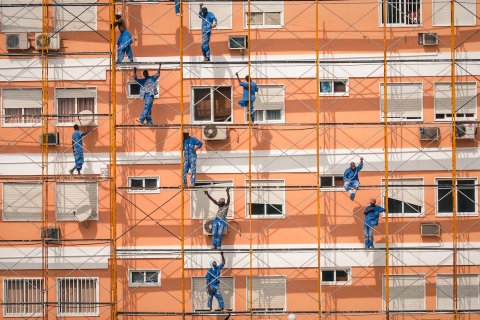Many families residing in Luanda are unaware of the sound of gushing water from a tap, which is why members of these families are forced to wake up early to travel long distances in search of the precious liquid, in order to meet their needs as quench their thirst and carry out their household chores or tasks related to their breadwinner.
For those who have personal transport, it becomes a lighter task compared to those who need to carry the 20 liter bottles (bidons) in the wheelbarrow, but some people use their heads to carry basins of water. Aware of this situation, this opinion article aims to describe factors such as poor management, the absence of Water Treatment Plants (WTP) and uncontrolled population growth, which can compromise the availability of treated water and its distribution between the population agglomerates in the capital of the country (Luanda).
Population growth is a factor that contributes to the problem related to water supply, as the population grows the demand will increase and, on the other hand, there is the irrational use of water by the population.
Misuse of a particular resource can compromise its availability, as is the case with water. Many residents do not pay attention to the rational use of water, leave faucets open even when they are not using it, do not control water waste when washing vehicles, irrigating plants and when cleaning the house.
Water supply management
It is noteworthy that the current situation regarding water supply, which the population faces, is not related to the scarcity of this resource, but to the ineffective planning and water policies and irrational use, which end up contributing strongly to the mismanagement scenario. of this resource.
As a result of this inefficiency, many residents are dissatisfied with the services provided by the Luanda Public Water Company (EPAL), as it is unable to meet the needs of its consumers. Factors such as irregularities in supply and problems with plumbing compromise the services provided by the company.
According to Costa and Assís (2019), a water supply system can be conceived and projected to serve small neighborhoods and large cities. The peripheral areas end up being the most affected by the lack of water, although they are areas with little infrastructure, it is necessary to remember that in these places there are lives and water is part of the maintenance of all living beings. Faced with this sad reality, efforts must be made to improve the supply system, so that everyone has access to drinking water.
Water treatment plants (ETA)
The ETA can be understood as a place where the purification of water collected from a source is carried out to make it suitable for consumption and thus use it to supply the population. The absence of these contributes to poor quality water supply. In this attempt, it is necessary to implement more ETA in the country, taking into account that water for public supply can be collected directly from a lake, a dam or a river, it can contain impurities that are highly harmful to health if consumed without no treatment.
It is important that the three treatment phases, physical, chemical and biological, are fulfilled and well carried out, in order to reduce the level of contamination. In this sense, the availability of technological means is of paramount importance for the treatment and monitoring of ETA.
The supply infrastructure must accompany the city's growth, taking into account that the population growth can generate a supply problem, that's what we see in the country, many municipalities have grown and continue to grow in terms of inhabitants, but unfortunately the infrastructures supply systems remain the same, as the search for alternative sources of water can generate future problems in the reservoirs and will compromise the quality of water once they are used incorrectly.
Given this situation, it is important to create programs (lectures and short courses on the preservation and conservation of natural resources) in order to raise awareness among the population. The restructuring and maintenance of supply channels can be pointed out as ways to solve this problem.
Recommendations
Furthermore, it would be good if the government created an agreement between EPAL and universities and technical high schools, so that students in the Mechanics, Civil Construction, Metalworking and Hydraulics courses could carry out their final internship at the sector responsible for the public water supply, would increase the workforce and reduce the expenses that are invested for the repair of equipment.
Therefore, it is necessary to think about the implementation of water reuse systems, as well as the classification of water use, in order to mitigate the factors that affect the availability of this liquid, which is part of the life of every living being.








